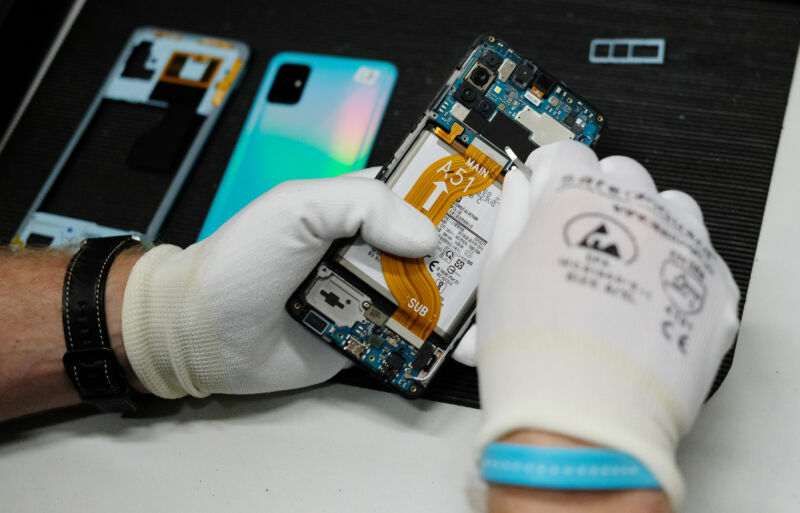
European Commission regulators have suggested that smartphones and tablets sold there offer 15 different kinds of spare parts for at least five years, as part of a broad effort to lessen their environmental impact.
A draft regulation of “ecodesign requirements for mobile phones, cordless phones, and slate tablets” posted on August 31 notes that phones and tablets are “often replaced prematurely by users” and are “not sufficiently used or recycled” (i.e., junk-drawer-ed) at the end of their life. The cost is the energy and new materials mined from the earth for new phones, and unrecycled materials sitting in homes. Extending the lives of smartphones by five years—from their current typical two- to three-year lives—would be like taking 5 million cars off the road, according to the Commission’s findings.
The most notable proposed fix (listed in Annex II) is for phone makers and sellers to make “professional repairers” available for five years after the date a phone is removed from the market. Those repairers would have access to parts including the battery, display, cameras, charging ports, mechanical buttons, microphones, speakers, and hinge assemblies (including for folding phones and tablets).
Phone companies also get a choice: either make replacement batteries and back-covers available to phone owners or design batteries that meet minimum standards. Those include still having 83 percent of its rated capacity after 500 full charging cycles, then 80 percent after 1,000 full charging cycles. Apple, for example, currently claims that its iPhones are designed to retain 80 percent capacity after 500 charge cycles.
Buyers of smartphones also get access to displays, SIM and memory card trays, microphones, charging ports, and hinges under the proposed regulations. And repair instructions for all those parts must be available for seven years after the last day of marketing devices, with relatively open systems for professional repair workers to register and receive access. The repair instructions must also be fairly extensive, including exploded views, board and wiring schematics, if required, and access to the software needed to authorize any locked-down parts.
There’s much more to the proposed regulations, both in repair and reliability. Of particular note is a requirement that companies provide security updates for at least five years, “functionality updates” for three years, and both of those offered two to four months after the public release of security patches or “an update of the same operating system… on any other product of the same brand.” For Android vendors, this would be a seismic shift in software support.
Europe’s smartphone regulations have pushed progressively forward in recent years, with initiatives like France’s repairability scoring and an EU-wide adoption of USB-C by 2024. But the Commission’s draft regulation would go beyond even the most aggressive aims of the US right-to-repair movement. Repair bills introduced at state and federal levels typically ask for manufacturers to supply only the same parts, tools, and manuals as they would provide to their own repair technicians or licensed shops. Apple, Samsung, and Google have recently moved to offer more parts and repair options, but at nowhere near the scope of the Commission’s proposed regulations.
Feedback on the proposals will be collected from now through September 28. A version of these proposals is slated for adoption in the fourth quarter of 2022, and most of them are written to take effect 12 months after approval.
It’s still early for comment, but manufacturers are not excited about mandatory repair considerations.
Tech trade group Digital Europe told the Financial Times that “potential overproduction, subsequent warehousing and destruction of spare parts” would result in waste and higher prices for customers.
Xiaomi’s Netherlands branch submitted feedback on the broader goals of the EC’s initiative in January 2021. A representative wrote that, while it recognized the importance of software updates, “Operating System support often depends on third parties who may sometimes fail to provide software versions which are compatible with all maintained versions of the operating system.”
Xiaomi also stated that repair “has to be within our authorized repair network and using original spare parts” to ensure “quality and reliability.” Providing repair parts and manuals to “third-party professional repairers whose level of technical skills, repair time and cost as well as success rate” are unknown would “create serious risks for consumers in terms of quality, safety, and security.”



















